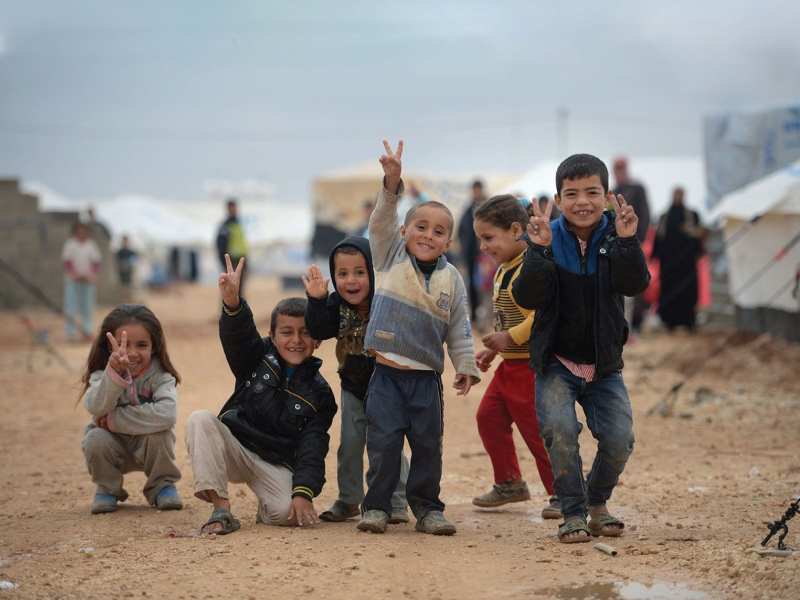More than half of Syria’s pre-war population is now displaced. According to the United Nations High Commissioner for Refugees (UNHCR), Syrians1 represent the largest number of forcibly displaced persons in the world. Some 13 million Syrians have been forced to leave their homes since 2011, when the protests against Bashar al-Assad’s regime began. Roughly half of them were forced to leave the country; Turkey, Jordan, Lebanon and Germany host the largest numbers of Syrian refugees. The other 6.2 million are internally displaced, mostly in the north-west and north-east of the country, in areas outside the control of Assad’s forces. The fate of these displaced citizens is instrumental to the sustainability of any future political solution to end the conflict and ensure lasting, stable peace.
At least nine million displaced Syrians want to return home one day, but need to see significant changes in the conditions on the ground before that happens. Security is their number one concern, and this must form the basis of every conversation seeking to address this unprecedented displacement of civilians in conflict.
The rights of the displaced—primarily their right to a safe, voluntary and dignified return to their homes—are even more important when considering the long-term consequences of the continuing suffering and prolonged displacement. The displacement continues: more than one million people were displaced in just three months at the start of 2020 in an onslaught of Assad’s forces and their Russian and Iranian allies in the towns and cities in Idlib and north Aleppo. This has created untold suffering; children, women and men have been displaced multiple times, and forced to live in makeshift camps on the Turkish border in the harshest winter, in subhuman conditions.
The horror of Idlib provides only the latest reminder of the suffering endured by displaced Syrians over the last 9 years. Many of them have continued throughout this time to endure difficult living conditions, lack of access to employment, education and basic prospects for a dignified future while languishing in camps, with no end to conflict or hope for return in sight. In some refugee-hosting countries, displaced Syrians are seen as easy scapegoats for internal political and economic problems; opportunist political actors dehumanize them and fuel hostility against them for political gain.
Despite all this suffering, there has been no significant return to Syria, except in a statistically marginal number of individual cases in which people were forced, for various reasons, to choose this option. This is primarily due to the fact that the regime continues to repress the areas it controls. An earlier report in this series,2 published last year documented the dangers faced by the few who have been forced to return to Assad-held areas. Since the report’s publication in October 2019 the situation has deteriorated even further, with the complete collapse of the economy and basic services. Syria is now a failed state, with rampant effort at demographic change, almost entirely controlled by Russia and Iran.
The report you are reading describes the results of a survey of 1,100 displaced individuals and analyses their responses to questions about why they fled, how they feel in their places of displacement, whether they want to return home, and what conditions must be met in order for them to feel safe to do so in a dignified and voluntary manner.
The respondents’ answers highlight how damaging and unsettling multiple displacements have been, and the reduction in protections and opportunities Syrians are facing in some host communities. As those circumstances decline, most respondents reported that they felt that they have access to the information they need in order to decide whether to return, but in reality they were unaware of critical factors that present enormous risks to them if they do so. The danger of this feeling of unease and poor information is premature return, before the conditions for return are met, with the potential for dangerous and even deadly consequences.
The analysis in this report is based on a large, representative sample; it provides uniquely rich information. The Syrian Association for Citizens’ Dignity researchers invested enormous effort in reaching displaced Syrians in various countries, as well as inside Syria, to explore in depth what motivates their thinking about returning home and details the factors that need to change from displaced Syrians point of view in order to allow them to return home safely. The majority of these concerns relate to security, but some are social and economic too. This information is intended to inform policy-makers and advocates working to help end the conflict in Syria and help the displaced population return home safely. Taken together, the opinions presented in this report form a roadmap to help policy-makers and practitioners address these challenges and protect the rights of Syria’s displaced, and have a realistic chance at shaping a comprehensive and sustainable solution that will secure those rights and legitimate concerns.
It is essential to develop a political solution that has the rights of displaced Syrians at its foundation, and the creation of an environment for safe, voluntary and dignified returns as its backbone. The solution to the difficulties of the majority of displaced Syrians involves ending the conflict in Syria. The process may be demanding, and the solutions complex and challenging, but this is the only sustainable, realistic way to prevent the war from becoming an unending conflict with recurring cycles of violence that destabilize the region and beyond.
As this reality gradually, but inevitably, starts informing the political process on the future of Syria, it will be of decisive importance to ensure that the views of displaced Syrians are comprehensively, genuinely and adequately represented to inform the key decisions and solutions. The displaced Syrians will define what constitutes the minimum conditions for their safe, voluntary and dignified return. They must be heard and taken seriously.
Full report in the link below:



